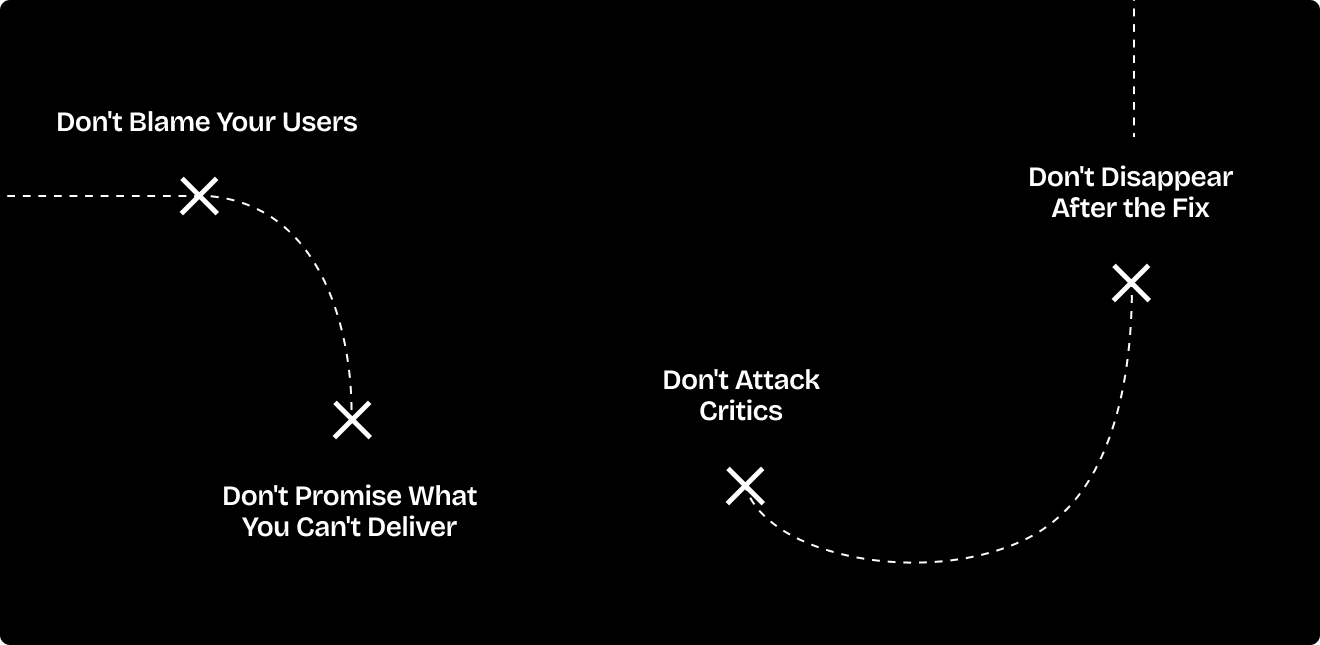Related Articles



The cold truth: your project will face a crisis. Not if. When.
Maybe it's a smart contract exploit. Maybe it's a rogue team member going full supervillain on X. Maybe it's just market indifference to your new token.
The difference between projects that survive crises and projects that become cautionary tales is having a competent crisis strategy in place.
After watching dozens of projects handle crises (and helping clean up the aftermath), here's what we've learned about communicating when everything's on fire.
Here’s where most projects trip up, turning moments of crisis into disasters.
The Radio Silence Squad: "Maybe if we don't say anything, people will forget about the exploit."
See: Do Kwon during Terra/Luna's collapse. Days of silence while $60B evaporated. Spoiler alert: People didn't forget.
The Panic Posters: Firing off contradictory tweets every 5 minutes in a misguided attempt to "control the narrative."See: Sam Bankman-Fried during FTX's final days. Contradictory statements every few hours that made everything worse and destroyed what little credibility remained. There may have been no way to save this quagmire, but this was straight out of the how-not-to-handle-a-crisis playbook.
The Blame Shifters: "Actually, this is blockchain’s fault for existing."
See: Celsius blaming "extreme market conditions" instead of owning their catastrophic risk management. Users lost billions while leadership pointed fingers.
None of these work. All of them make everything worse.

Building your crisis playbook when everything's calm saves you from looking like a headless chicken when everything's on fire. 30 minutes of prep work beats 30 hours of retroactive damage control every. single. time.
Here’s the framework:
Within 30 minutes: Acknowledge that something happened. You don't need all the answers yet—just show you care and are on top of it
Use something like: "We're aware of reports of [issue] affecting [affected users/funds/functionality]. We're investigating immediately and will provide updates as we learn more. User safety is our priority."
Real example: When Black Thursday hit MakerDAO in March 2020 and $8 million in bad debt appeared overnight, their team posted clear updates on Twitter and their forum within the first hour. They didn't pretend everything was fine or try to hide the severity.
What this does: Shows you're not hiding, you're not panicking, and you give a damn about your users.
Every crisis update needs three things:
MakerDAO's approach: As chaos unfolded, they opened up AMAs, hosted public community calls, and published detailed blog posts walking users through what happened and what they were doing about it. They used concrete facts, action steps, and real timelines.
Miss any of these three truths and you'll be explaining yourself (at least) twice.
Here's where most Web3 projects (and let's be honest, most companies period) completely fumble. They double speak their way around accountability instead of just being human.
Don't say: "An unexpected interaction between contract parameters resulted in an adverse outcome."
Say: "A bug in our smart contract allowed an attacker to drain funds. Here's exactly what happened and what we're doing to fix it."
How MakerDAO handled it: Instead of burying the aftermath, they released a full incident report, explained lessons learned, and rolled out new risk parameters through open governance—inviting commentary, criticism, and collaboration every step.
The second approach builds trust. The first makes people think you're either lying or incompetent.
Even in Web3, mainstream media coverage shapes perception — especially among investors and regulators. Have a media statement ready that links to your detailed blog post. Stay tuned: we'll have more on this in a future article.
Avoid these traps like your project’s life depends on it—because it just might.

"If users hadn't interacted with the experimental feature..."
Nope. If you shipped it, you own it.
"All funds will be restored within 24 hours" turns into "Actually, it might take 6 months" real quick.
That person dunking on you on Twitter? They might be a j*rk, but engaging just makes you look petty and distracts from actual solutions. Ignore the trolls.
Most projects vanish after the dust settles. Don’t be most projects. Share what you learned, what you're changing, and how you're preventing Round 2.
Case in point: OpenSea's wallet connection crisis in June 2023. When users couldn't connect their wallets due to a MetaMask redirect bug, OpenSea went largely silent while frustrated users vented on GitHub and social media. No clear acknowledgment, no timeline for fixes, no regular updates. Even though this wasn't a hack or exploit, the poor communication turned a technical hiccup into a trust problem. Users started questioning whether OpenSea actually cared about their experience—all because they didn’t address it immediately and publicly.
You made it with a few bruises, but you’re still alive. Now, don't just move on like nothing happened. Transparency, accountability, and action build trust.
Share the Learning: Write the incident report. Share what broke, why it broke, and how you're preventing it from breaking again.
Prove the Changes: Don't just say you're implementing better security practices—show the audits, the new processes, the team changes.
Rebuild Trust Through Action: Actions > Apologies. Every. Single. Time.
Here's the good news: How you handle a crisis can actually strengthen your position.
Users remember which projects communicated clearly during chaos. Investors notice which teams kept their heads when everything was falling apart. The market rewards transparency and competence, even in the face of problems.
Uniswap during the SushiSwap vampire attack (2020): While billions in liquidity drained overnight to a literal fork, Uniswap didn't panic-tweet or engage in Twitter drama. They stayed focused on their product and community. When the dust settled, their professionalism during the attack actually strengthened their position as a mature, reliable DEX.
NFT Platform Rarible during 2021 wallet issue: During a wallet integration bug that temporarily affected user login and transaction abilities, Rarible quickly posted status updates on Twitter and Discord within an hour of detection. They gave regular updates on investigations and fixes while responding to user questions through AMAs on Discord. This transparency and timeliness kept user frustration low and prevented escalation.
The takeaway: Never waste a crisis. How you respond can be a defining competitive advantage.
Need a hand with PR or turning crisis into opportunity? Contact Distractive
Join us for a free PR webinar: Hype Fades, Credibility Lasts→
Build the future of Web3 with people who get you. No suits required. Memes encouraged.